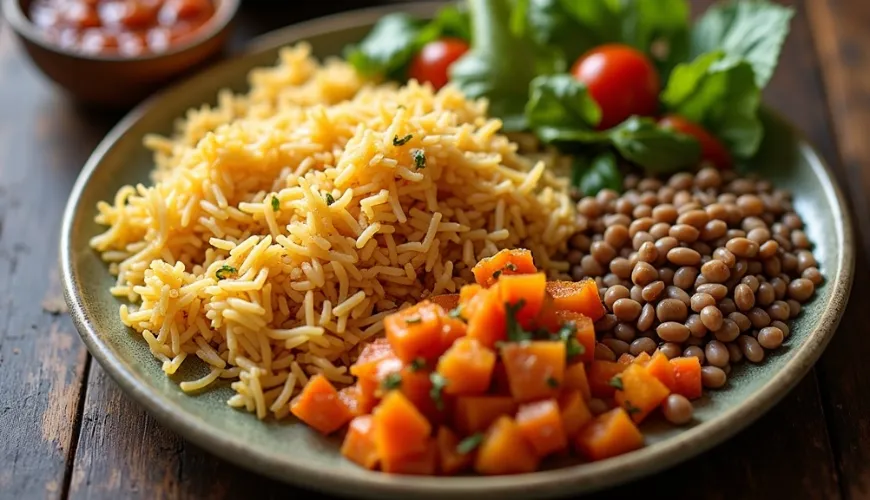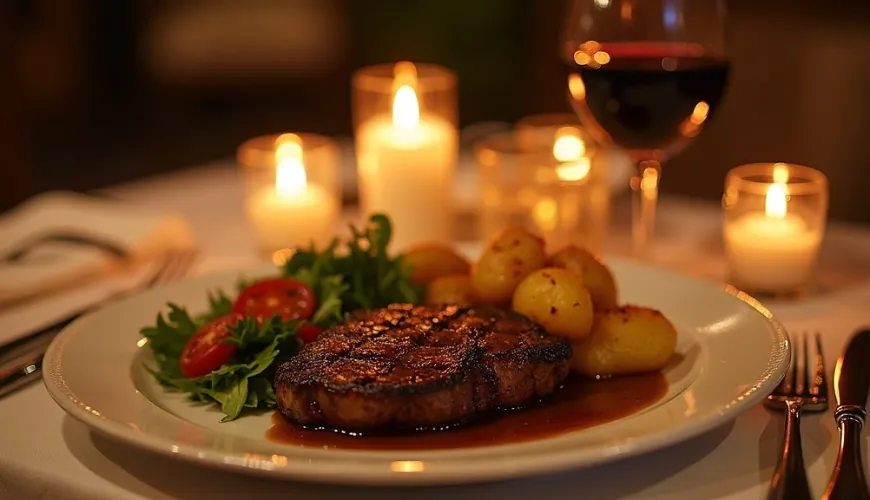
Why Rump Steak is an Ideal Choice for Inexperienced Cooks

Rump Steak - How to Prepare a Juicy Piece of Beef You'll Love
Beef has a long tradition in Czech cuisine. Whether it's svíčková with dumplings or beef broth with noodles, few ingredients have such a reputation. However, when it comes to steak, many people hesitate. Yet, rump steak, or steak from the rump cap, is among the more affordable and tasty options that almost anyone can prepare at home. The question is: how to make rump steak tender, juicy, and full of flavor?
What is Rump Steak and Why Not to Fear It
Rump steak comes from the upper part of the cow's hindquarter, specifically the rump cap or "rump." Compared to other types of steak meat, such as tenderloin or ribeye, it has a more pronounced structure and slightly more fat. However, this fat plays an important role—it gives the meat juiciness and flavor.
Many people are intimidated by preparing steak. They fear overcooking it, making the meat tough and the result disappointing. The truth is, rump steak in a pan is one of the simplest ways to prepare a decent beef steak at home without the need for special equipment or experience.
Choosing the Meat and Preparation is Key
Let's start from the very beginning—choosing the meat. Ideally, choose aged beef from free-range farms. At quality butchers or farmers' markets, you can find Czech beef that rivals Argentine or Irish meat in quality. A part with fine fat marbling is ideal, as the fat melts during cooking and adds flavor to the meat.
Before preparing the meat, take it out of the fridge at least 30 minutes in advance to bring it to room temperature. This is a small but important rule—if you put the steak in the pan directly from the fridge, the pan's temperature will change, and the meat will not sear properly. The result can be gray, tough meat instead of a beautifully seared steak with a crispy crust.
A Simple Rump Steak Recipe Anyone Can Master
When it comes to a rump steak recipe, most people expect some complicated alchemy. The truth is much simpler—the fewer things interfere with the preparation, the better. Beef like rump needs very little.
For this simple treat, prepare 2 solid slices of rump steak, about 2.5 cm thick, season them with coarse sea salt, and add a pinch of freshly ground pepper. Heat a tablespoon of clarified butter or olive oil in a pan, and if you have a sprig of rosemary or thyme on hand, feel free to add it along with two unpeeled, lightly crushed garlic cloves—they'll add great flavor to the meat, even if they're not necessary.
Heat the pan over medium-high heat, ideally cast iron or thick-bottomed—it retains heat and allows for even searing. Dry the meat with a paper towel and lightly coat it with oil, then salt and pepper it just before placing it in the pan.
Place the steak in the heated pan and leave it on one side for at least 2–3 minutes without moving. When a golden crust forms on the bottom side, turn it over. After another 2–3 minutes, add the garlic, herbs, and a piece of butter. Use a spoon to baste the meat with this butter—it will create a rich flavor and beautiful color.
The internal temperature of the meat determines the degree of doneness. For medium rare, which is recommended for rump steak, the temperature should be about 55–57 °C. If you don't have a thermometer, you can use a simple touch test or compare it with the tension in the palm of your hand.
Then there's just one thing left—let the steak rest for about 5 minutes. The meat will settle and the juices will distribute evenly. Slice across the muscle fibers to keep the rump steak tender.
And What to Serve With It?
Rump steak pairs well with many side dishes due to its versatility. Some prefer the classic option of roasted potatoes or fries, while others choose a lighter option like salad or grilled vegetables. It also tastes great with fresh bread, herb butter, and a glass of red wine.
In modern cuisine, it is often combined with unconventional elements—such as roasted pumpkin puree, cauliflower cream, or pickled onions. Here, creativity knows no bounds.
Why Rump Steak is an Ideal Choice Even for Beginners
One of the reasons rump steak is gaining popularity is its value for money. Not everyone can afford luxurious beef tenderloin, but quality rump cap offers a very similar experience at a more favorable price. And what's more—learning to prepare a good steak is not just a culinary skill, but also a way to treat yourself to something special.
Imagine an evening after a long workday. Instead of ordering food, you prepare a steak that's ready in a few minutes. You light a candle, pour yourself some wine—and suddenly even an ordinary Tuesday turns into a small celebration.
Common Mistakes and How to Avoid Them
Although the rump steak recipe is simple, some mistakes are repeated:
- Turning the meat too often—the steak needs to rest to sear well.
- Insufficiently heated pan—without high temperature, there won't be a crust.
- Slicing immediately after searing—the meat must rest, otherwise, the juices will escape.
- Overcooking the meat—overcooked steak loses juiciness and flavor.
As the famous chef Anthony Bourdain said: "The best steak is the one that respects the meat itself." You don't need to add complicated marinades or dozens of spices. Just quality ingredients, patience, and a bit of care.
Rump Steak is Not Just a Dish, It's an Experience
In a time when more people are interested in the origin of food, sustainability, and quality, beef rump steak holds a firm place. It can be easily prepared at home, requires no special equipment, and still offers a result that can easily match restaurant steaks.
Moreover, it can form an entire philosophy—not being afraid to cook, trying new things, and enjoying food not just as a necessity but as a moment of joy. And isn't that exactly what we need more than ever in today's fast-paced world?
Next time, instead of a quick lunch or dinner, take the time to prepare a decent rump steak in a pan. You might find that the kitchen is not just a place to heat food—but a space where true enjoyment begins.

